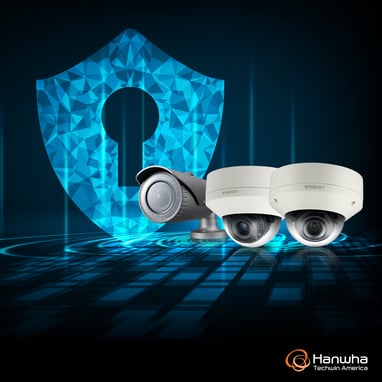 In many of the most high-profile data breaches that have occurred recently, hackers accessed corporate networks through POS, HVAC and other networked systems that failed to provide an adequate level of security. It’s a paradox to think that devices designed to protect customers' property and personal information are used as a means of seizing sensitive personal and corporate information. It is essential that systems integrators take the necessary measures to ensure the highest level of security for their customers’ networks and IP cameras, encoders, NVRs and DVRs. Here are best practices to strengthen device security, prevent unauthorized access and protect end users’ video surveillance systems and overall network.
In many of the most high-profile data breaches that have occurred recently, hackers accessed corporate networks through POS, HVAC and other networked systems that failed to provide an adequate level of security. It’s a paradox to think that devices designed to protect customers' property and personal information are used as a means of seizing sensitive personal and corporate information. It is essential that systems integrators take the necessary measures to ensure the highest level of security for their customers’ networks and IP cameras, encoders, NVRs and DVRs. Here are best practices to strengthen device security, prevent unauthorized access and protect end users’ video surveillance systems and overall network.
Passwords
Here are password safety must do’s:
1. Change Defaults
Default passwords can be easily located online or in user manuals, leaving devices unsecured and highly vulnerable to hacking. Changing defaults is perhaps the single most important step in securing devices. Passwords should require a minimum of 8 characters and 2 to 3 categories of characters.
2. No kids, no pets, no birthdays
Don’t use the same password for everything. If someone can decipher the password for your email account, they then have access to everything you’ve password-protected, opening up the potential for theft, identity theft and much more. And don’t use names, birthdates and/or words that can be found in the dictionary.
3. Utilize Multiple Credentials
Use different passwords for each device or use the same password only for some – not all – of the devices, clients and systems on the network. Also create a unique username instead of using the admin account for the VMS and other clients to connect to. This prevents the admin password from being constantly transmitted over the network in an effort to prevent it from being intercepted.
We all need to be confident that our systems are secure from both a physical and a cyber perspective. To build this confidence, systems integrators should partner with companies and vendors that have strong cyber security policies, dedicated resources, and a clearly articulated plan for combating security vulnerabilities. Employing and sharing best practices with their customers’ IT, security and operations department will ensure the ongoing safety and security of their people and assets.
Click here to learn more and to download the Hanwha Techwin cybersecurity whitepaper.


.png?width=58&height=58&name=X_logo_2023_(white).png)
